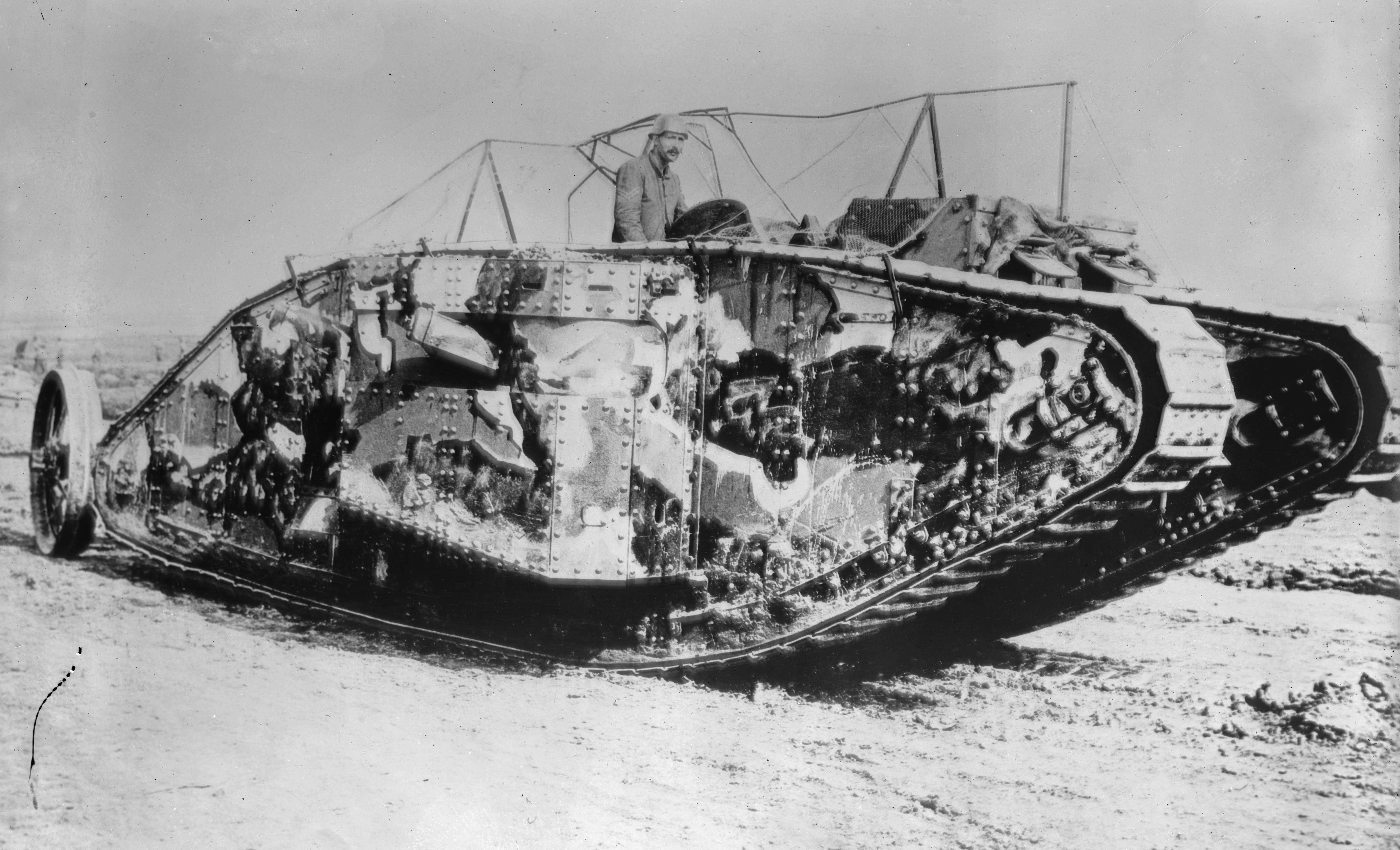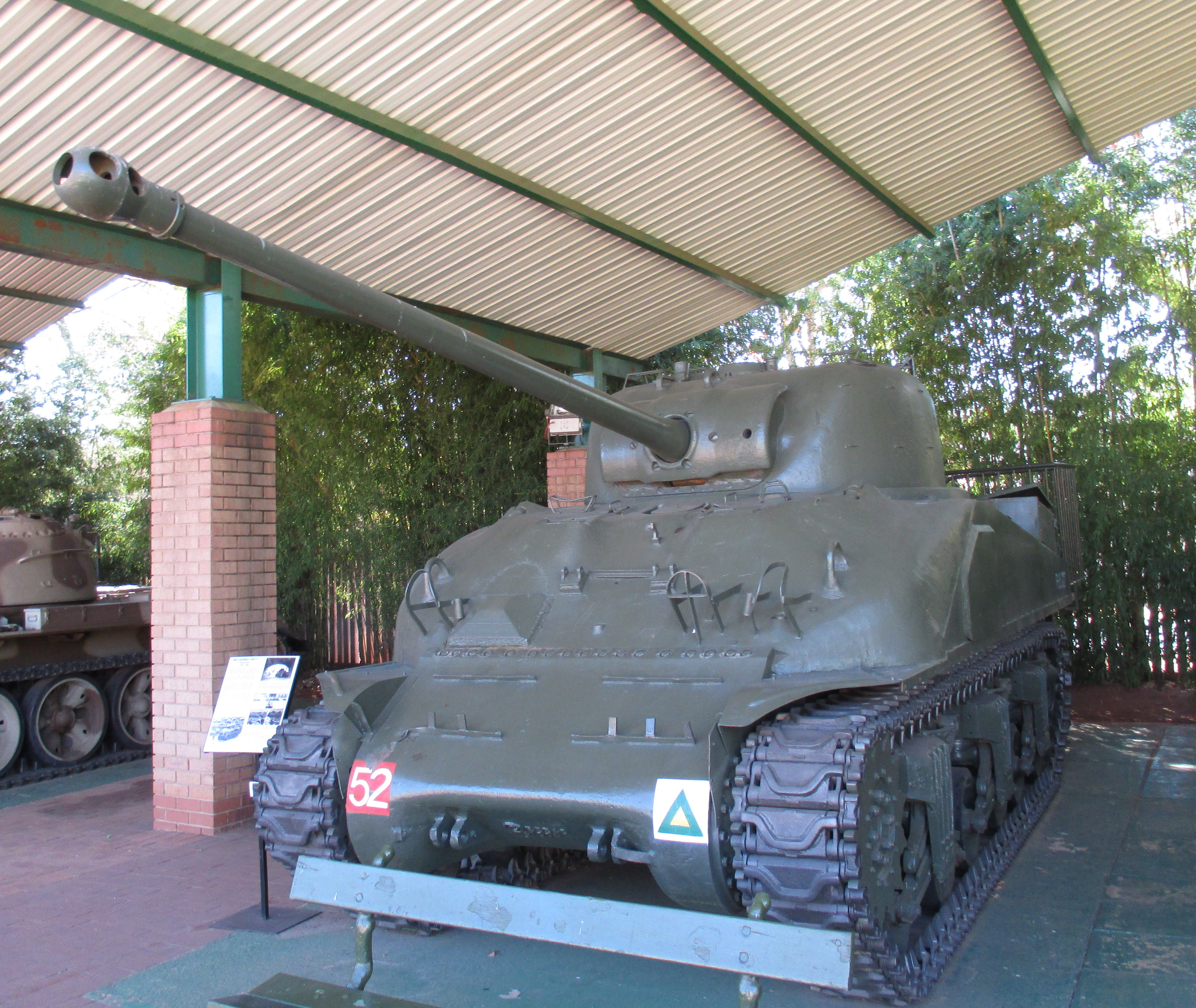|
KwK 36
The 8.8 cm KwK 36 () was an tank gun used by the German Army during World War II. This was the primary armament of the PzKpfw VI Tiger I tank. It was developed and built by Krupp. Design The 8.8 cm KwK 36 was derived from the 8.8 cm Flak 36 anti-aircraft gun by adapting/modifying it to the limited space available in tank turrets. Parts of the KwK 36 were built to practically the same design as the and guns already used in German tanks. The breech ring was square in section and on a side. The breech block was of vertical falling wedge type and operated semi-automatically, meaning that after firing the empty cartridge case was automatically ejected, while the breech cocked itself and remained open, ready to receive the next round. The "L/56" in the designation is descriptor of barrel length; the ratio of the length of the barrel in proportion to the width of the bore. The designation "L/56" means the barrel is 56 times 88 mm - about . The longer the tube is ... [...More Info...] [...Related Items...] OR: [Wikipedia] [Google] [Baidu] |
Tiger I
The Tiger I () was a Nazi Germany, German heavy tank of World War II that began operational duty in 1942 in North African Campaign, Africa and in the Soviet Union, usually in independent German heavy tank battalion, heavy tank battalions. It gave the German Army (1935–1945), German Army its first armoured fighting vehicle that mounted the 8.8 cm KwK 36, KwK 36 gun (derived from the 8.8 cm Flak 18/36/37/41, 8.8 cm Flak 36, the famous "eighty-eight" feared by Allied troops). 1,347 were built between August 1942 and August 1944. After August 1944, production of the Tiger I was phased out in favour of the Tiger II. While the Tiger I has been called an outstanding design for its time, it has also been criticized for being overengineering, overengineered, and for using expensive materials and labour-intensive production methods. In the early period, the Tiger was prone to certain types of track failures and breakdowns. It was expensive to maintain, but generally mec ... [...More Info...] [...Related Items...] OR: [Wikipedia] [Google] [Baidu] |
Armour-piercing, Capped, Ballistic Cap
Armour-piercing, capped, ballistic capped (APCBC) is a type of configuration for armour-piercing ammunition introduced in the 1930s to improve the armour-piercing capabilities of both naval and anti-tank guns. The configuration consists of an armour-piercing shell fitted with a stubby ''armour-piercing cap'' (AP cap) for improved penetration properties against surface hardened armour, especially at high impact angles, and an aerodynamic ''ballistic cap'' on top of the AP cap to correct for the poorer aerodynamics, especially higher drag, otherwise created by the stubby AP cap. These features allow APCBC shells to retain higher velocities and to deliver more energy to the target on impact, especially at long range when compared to uncapped shells. The configuration is used on both inert and explosive armour-piercing shell types: *Armour-piercing (AP), capped, ballistic capped (APCBC) * Semi-armour-piercing (SAP), capped, ballistic capped (SAPCBC) * Armour-piercing, high-explosiv ... [...More Info...] [...Related Items...] OR: [Wikipedia] [Google] [Baidu] |
Tank Guns
A tank gun is the main armament of a tank. Modern tank guns are high-velocity, large-caliber artilleries capable of firing kinetic energy penetrators, high-explosive anti-tank, and cannon-launched guided projectiles. Anti-aircraft guns can also be mounted to tanks. As the tank's primary armament, they are almost always employed in a direct fire mode to defeat a variety of ground targets at all ranges, including dug-in infantry, lightly armored vehicles, and especially other heavily armored tanks. They must provide accuracy, range, penetration, and rapid fire in a package that is as compact and lightweight as possible, to allow mounting in the cramped confines of an armored gun turret. Tank guns generally use self-contained ammunition, allowing rapid loading (or use of an autoloader). They often display a bulge in the barrel, which is a bore evacuator, or a device on the muzzle, which is a muzzle brake. History World War I The first tanks were used to break through trench d ... [...More Info...] [...Related Items...] OR: [Wikipedia] [Google] [Baidu] |
88 Mm Artillery
88 may refer to: * 88 (number) * one of the years 88 BC, AD 88, 1988, 2088 * Highway 88, see List of highways numbered 88 * The 88 (San Jose), a residential skyscraper in San Jose, California, USA * The 88, a nickname for the piano derived from the number of keys it typically has * A Morse code abbreviation meaning "Love and kisses" * ''88'' (film), a 2015 film directed by April Mullen, starring Katharine Isabelle * Atomic number 88: radium * The butterfly genus '' Diaethria'', which has an 88-like pattern on its wings * The butterfly genus '' Callicore'', which has an 88-like pattern on its wings * 88, a neo-Nazi symbol and code number for "Heil Hitler," based on "H" being the eighth letter of the alphabet * 88 Thisbe, a main-belt asteroid * Oldsmobile 88, a full-sized car produced by General Motors Weaponry * Gewehr 88, German rifle * Patrone 88, German rifle cartridge * Hanyang 88, Chinese rifle based on the Gewehr 88 * 8.8 cm Flak 18/36/37/41, known as ''the e ... [...More Info...] [...Related Items...] OR: [Wikipedia] [Google] [Baidu] |
World War II Tank Guns
The world is the totality of entities, the whole of reality, or everything that exists. The nature of the world has been conceptualized differently in different fields. Some conceptions see the world as unique, while others talk of a "plurality of worlds". Some treat the world as one simple object, while others analyze the world as a complex made up of parts. In scientific cosmology, the world or universe is commonly defined as "the totality of all space and time; all that is, has been, and will be". Theories of modality talk of possible worlds as complete and consistent ways how things could have been. Phenomenology, starting from the horizon of co-given objects present in the periphery of every experience, defines the world as the biggest horizon, or the "horizon of all horizons". In philosophy of mind, the world is contrasted with the mind as that which is represented by the mind. Theology conceptualizes the world in relation to God, for example, as God's creatio ... [...More Info...] [...Related Items...] OR: [Wikipedia] [Google] [Baidu] |
Tank Guns Of Germany
A tank is an armoured fighting vehicle intended as a primary offensive weapon in Front line, front-line Land warfare, ground combat. Tank designs are a balance of heavy firepower, strong Vehicle armour, armour, and battlefield Mobility (military), mobility provided by Continuous track, tracks and a powerful engine; their main armament is often mounted within a Gun turret, turret. They are a mainstay of modern 20th and 21st century ground forces and a key part of combined arms combat. Modern tanks are versatile mobile land weapons platforms whose main armament is a large-calibre tank gun mounted in a rotating gun turret, supplemented by machine guns or other ranged weapons such as anti-tank guided missiles or rocket launchers. They have heavy vehicle armour which provides protection for the crew, the vehicle's munition storage, fuel tank and propulsion systems. The use of tracks rather than wheels provides improved operational mobility which allows the tank to overcome rugged ... [...More Info...] [...Related Items...] OR: [Wikipedia] [Google] [Baidu] |
85 Mm Air Defense Gun M1939 (52-K)
The 85 mm air defense gun M1939 (52-K) () was an Soviet Union, Soviet anti-aircraft gun, developed under guidance of leading Soviet designers Loginov Mikhail Nikolaevich, M. N. Loginov and G. D. Dorokhin. This gun was successfully used throughout the Second World War against level bombers and other high- and medium-altitude targets. In emergencies they were utilized as powerful anti-tank weapons. The barrel of the 52-K was the basis for the family of 85-mm Soviet tank guns. After the war some 52-Ks were refitted for peaceful purposes as anti-avalanche guns in mountainous terrain. Virtually every country behind the Iron Curtain received this gun after World War II for their air defense. In the Soviet Union itself, these guns were largely superseded by the 100 mm air defense gun KS-19, 100 and 130 mm air defense gun KS-30, 130 mm guns. Description Adopted in 1939, the 85-mm M1939, like its German counterpart the 88 mm gun, 88-mm Flak 18/36/37, was meant for air defense. Lik ... [...More Info...] [...Related Items...] OR: [Wikipedia] [Google] [Baidu] |
Ordnance QF 17-pounder
The Ordnance Quick-Firing 17-pounder (or just 17-pdr)Under the British standard ordnance weights and measurements the gun's approximate projectile weight is used to denote different guns of the same calibre. Hence this was a 3-inch gun, of which there were several types in British service, which fired a projectile weighing approximately was a 76.2 mm (3 inch) gun developed by the United Kingdom during World War II. It was used as an anti-tank gun on its own carriage, as well as equipping a number of British tanks. Used with the APDS shot, it was capable of defeating all but the thickest armour on German tanks. It was used to "up-gun" some foreign-built vehicles in British service, notably to produce the Sherman Firefly variant of the US M4 Sherman tank, giving British tank units the ability to hold their own against their German counterparts. In the anti-tank role, it was replaced after the war by the 120 mm BAT recoilless rifle. As a tank gun, it was succeeded by th ... [...More Info...] [...Related Items...] OR: [Wikipedia] [Google] [Baidu] |
High Explosive
An explosive (or explosive material) is a reactive substance that contains a great amount of potential energy that can produce an explosion if released suddenly, usually accompanied by the production of light, heat, sound, and pressure. An explosive charge is a measured quantity of explosive material, which may either be composed solely of one ingredient or be a mixture containing at least two substances. The potential energy stored in an explosive material may, for example, be: * chemical energy, such as nitroglycerin or Dust explosion, grain dust * pressure, pressurized gas compressor, gas, such as a gas cylinder, aerosol can, or boiling liquid expanding vapor explosion * nuclear weapon, nuclear energy, such as in the fissile isotopes uranium-235 and plutonium-239 Explosive materials may be categorized by the speed at which they expand. Materials that detonate (the front of the chemical reaction moves faster through the material than the speed of sound) are said to be "high ... [...More Info...] [...Related Items...] OR: [Wikipedia] [Google] [Baidu] |
High Explosive Anti-tank
High-explosive anti-tank (HEAT) is the effect of a shaped charge explosive that uses the Munroe effect to penetrate heavy armor. The warhead functions by having an explosive charge collapse a metal liner inside the warhead into a high-velocity shaped charge jet; this is capable of penetrating armor steel to a depth of seven or more times the diameter of the charge (charge diameters, CD). The shaped charge jet armor penetration effect is purely kinetic in nature; the round has no explosive or incendiary effect on the armor. Unlike standard armor piercing shell, armor-piercing rounds, a HEAT warhead's penetration performance is unaffected by the projectile's velocity, allowing them to be fired by lower-powered weapons that generate less recoil. The performance of HEAT weapons has nothing to do with heat, thermal effects, with HEAT being simply an acronym. History HEAT warheads were developed during World War II, from extensive research and development into shaped charge warh ... [...More Info...] [...Related Items...] OR: [Wikipedia] [Google] [Baidu] |







